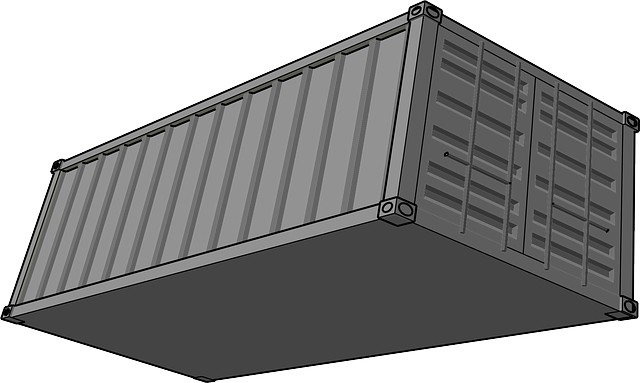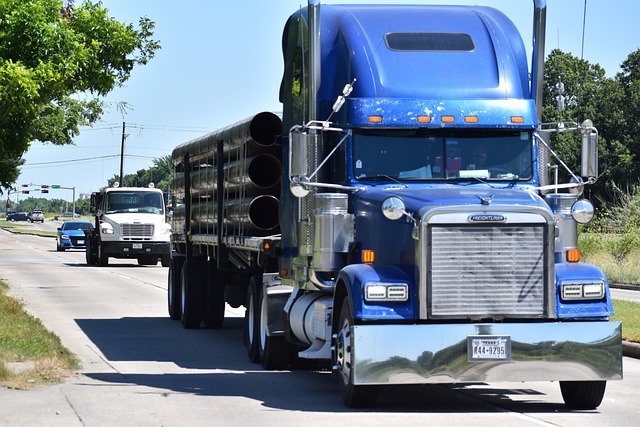Trucking insurance premiums are determined by various factors, including cargo type and value, driver experience, and safety records. Optimizing risk management involves implementing safety measures, efficient fleet practices, and leveraging telematics for real-time data. By adopting digital solutions like ELDs and GPS tracking, carriers demonstrate commitment to safety and efficiency, securing more competitive cargo insurance rates. Proactive risk assessment, regular training, maintenance schedules, and collaboration with insurers for customized policies can significantly reduce cargo insurance premium expenses.
In the dynamic world of trucking, managing insurance premiums is a complex task that requires strategic thinking. This article uncovers cost-effective strategies for navigating the challenges of trucking insurance, focusing on cargo insurance as a key component. We delve into understanding the factors influencing premium rates, explore optimized risk management techniques, and showcase how technology can significantly reduce costs. Additionally, we provide best practices for managing cargo insurance efficiently, ensuring businesses stay protected while maximizing savings.
Understanding Trucking Insurance Premiums: Factors and Influences

Trucking insurance premiums can vary significantly, making it essential for fleet owners and drivers to understand the factors influencing these costs. These premiums are essentially a reflection of the risk associated with transporting goods by truck. Several key elements play a crucial role in determining the price you pay for cargo insurance.
One significant factor is the type and value of the cargo being transported. The nature of the goods, their weight, and potential hazards they pose all contribute to the risk level. For instance, insuring perishable items or hazardous materials carries higher costs due to the increased liability and specialized handling required. Additionally, the driving history and experience of the trucker, as well as the overall safety record of the trucking company, are critical considerations. Insurance providers assess these factors to calculate premiums, ensuring that rates align with the potential risks involved in the transportation industry.
Optimizing Risk Management for Lower Insurance Costs

Optimizing risk management is a key strategy in lowering trucking insurance premiums. By implementing robust safety measures and driver training programs, companies can significantly reduce the likelihood of accidents and claims. This includes regular maintenance checks on vehicles to ensure they’re in top condition, adhering to strict driving hours to prevent fatigue, and promoting defensive driving techniques among staff. These proactive steps not only enhance road safety but also act as cost-saving measures for businesses in the long run.
Additionally, efficient fleet management practices contribute to lower cargo insurance costs. This involves optimizing routing and loading strategies to minimize empty miles, which reduces exposure to potential risks. Utilizing technology like telematics to monitor driver behavior and vehicle performance can further refine risk assessment. Companies should also review their coverage policies carefully, ensuring they’re aligned with the specific needs of their operations, thereby avoiding unnecessary expenses in their trucking insurance plans.
Leveraging Technology to Save on Trucking Insurance

Leveraging technology is a powerful way to save on trucking insurance premiums. Advanced telematics and GPS tracking systems provide real-time data on driver behavior, vehicle performance, and route optimization. This information can be used by insurance providers to offer tailored policies that reward safe driving practices and efficient routes, ultimately reducing costs for truckers. By embracing digital solutions, such as electronic logging devices (ELDs) and telematics platforms, carriers can demonstrate their commitment to safety and operational efficiency, leading to more competitive cargo insurance rates.
Moreover, technology enables better risk management through data analytics. Insurance companies can analyze historical data to identify patterns, assess risks more accurately, and offer customized coverage options. Telematics data, combined with machine learning algorithms, can predict potential accidents or maintenance issues, allowing for proactive measures. This not only enhances safety but also helps reduce claims, making it an attractive factor for insurance premium calculations. As technology continues to evolve, truckers who adopt these innovations stand to gain significant advantages in managing their insurance costs.
Best Practices for Cost-Effective Cargo Insurance Management

Implementing best practices for cost-effective cargo insurance management is paramount for trucking businesses aiming to optimize their operations while minimizing financial burden. A key strategy involves leveraging technology to streamline processes, reduce errors, and improve overall efficiency. Adopting digital solutions for documentation, claims management, and data analytics can significantly cut administrative costs associated with traditional manual systems.
Additionally, proactive risk assessment and mitigation strategies are essential. Regularly reviewing and updating safety protocols, driver training programs, and maintenance schedules can lower the likelihood of accidents and damage to cargo, thereby reducing insurance premium expenses. Collaborating with reputable insurance providers who offer customized policies based on individual business needs is another effective approach to securing competitive rates for cargo insurance.
By implementing strategic risk management practices, leveraging technology, and adopting best practices in cargo insurance management, trucking businesses can significantly reduce their insurance premiums. Understanding the key factors influencing these costs is essential, allowing operators to make informed decisions. Embracing digital solutions not only streamlines processes but also enhances accuracy, enabling more competitive rates. Through these cost-effective strategies, trucking companies can navigate the insurance landscape, ensuring they stay protected while optimising their financial health.
